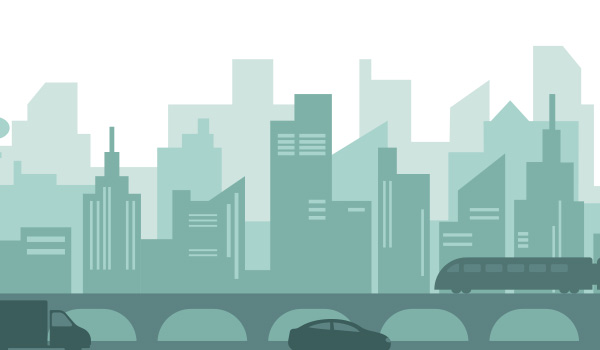Transport

Wherever you’re staying, you’ll need to get around the capital and its surrounding area. The Community of Madrid makes this easy with a monthly travel pass for just €20 (for tTravellers up to 26 years old). You can find an office to purchase the card in person via this link or, if you prefer, buy it online if you have an address in Spain they can post it to.
Getting from the airport to your new home
If you opt for public transport to get you from the airport to your accommodation, you can purchase a 1-day tourist pass for less than €10 (this price will be different if you’re heading outside of the city of Madrid; see map) and save the €2.50 that the card costs separately. The monthly travel pass is a personal card which features a photo, and so requires a €4 payment upon issue.
If you’ll be living in the centre of Madrid, you can use:
- Cercanías Renfe (local rail network): Free with the recommended tourist pass. Without the tourist pass, the cost varies from €1.85 and upwards, depending on the area you’re travelling to. The airport line links up with Atocha, in the centre of the city of Madrid.
- Aeropuerto Express Bus: 24-hour service costing €5, stopping at Cibeles square, Atocha (except between 11 pm and 6 am) and O’Donnell.
- Madrid Metro: Free with the tourist pass. Otherwise, it costs €2.50 for a multi card (mandatory) and the ticket itself starts at €1.50.
- Taxi or rideshare (‘VTC’): You can take a taxi (in Madrid they’re white with a red stripe on the door) or travel with one of several ridesharing companies. The cost of both options is variable. A journey to the centre of Madrid with this type of transport varies between €25 and €40.
If you’ll be living in Getafe or Leganés, you can use:
- Renfe Cercanías (local rail network): The tourist pass doesn’t apply here if you’re going to zone A, which requires an extension (around €17), but this isn’t recommended as you don’t make this money back on a single trip from the airport. If you take the metro to Getafe or Leganés, the total cost is €3.10 (€2.60 + €0.50 for the mandatory card). This option will take around an hour.
- Madrid Metro: Free with the tourist pass. Otherwise, it costs €2.50 for a multi card (mandatory) and the ticket itself starts at €1.50.
- Taxi or rideshare (‘VTC’): You can take a taxi (in Madrid they’re white with a red stripe on the door) or travel with one of several ridesharing companies. The cost of both options is variable. A journey to the centre of Madrid with this type of transport varies between €25 and €40.
Once you’re settled in Madrid…
Madrid is the perfect city for taking a stroll, but some things are just a little too far away. With the travel pass you can move freely throughout the entire city, whether day or night. There are also some other useful ways of getting around, such as:
- Bicycles: Madrid features a system called BiciMad. In Leganés, you’ll find another service called enBici and in Getafe you can use Gbici. All of these are low-cost public services which you’ll need to sign up for beforehand.
- Motorbikes and electric vehicles: These are available in the city of Madrid and allow you to get around freely and independently. You’ll need to download the app for each company, have a driving licence and pay the associated fees.
- Electric scooters: Available in the city of Madrid, eco-scooters allow you to move around the city independently. You’ll need to download the app for each company and pay the associated fees. Bear in mind that there are areas where you can’t use or leave these vehicles.
Getting from one UC3M campus to another
The UC3M campuses are located in Leganés, Getafe and Colmenarejo, as well as the postgraduate campus in Puerta de Toledo, in the city itself. You can easily travel between these campuses via public transport. The options to choose from are as follows:
From Leganés to:
- Getafe: Your best option for this journey is to take the metro, as there’s no direct ‘cercanías’ line and you’d have to go through Madrid city. You can take the metro from Leganés Central to Juan de la Cierva or Getafe Central. If you’re going by bus, you can use line 450.
- Puerta de Toledo: For this journey, you can take the train to Embajadores or the metro to the same station or to Puerta de Toledo.
From Getafe to:
- Leganés: Your best option for this journey is to take the metro, as there’s no direct ‘cercanías’ line and you’d have to go through Madrid city. You can take the metro from Juan de la Cierva or Getafe Central to Leganés Central. If you’re going by bus, you can use line 450.
- Puerta de Toledo: For this journey, you can take the train (to Embajadores changing at Atocha) or the metro to the same station or to Puerta de Toledo.
From Puerta de Toledo to:
- Leganés: You can take either the train from Embajadores or the metro from Puerta de Toledo to Leganés Central, which both services stop at.
- Getafe: You can go by train (to Getafe Central or Las Margaritas, but you’ll have to change at Atocha) or by metro to Juan de la Cierva.

